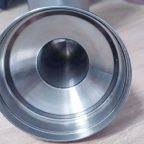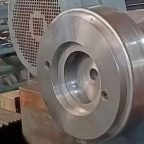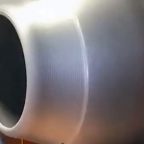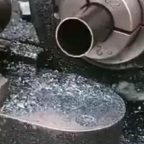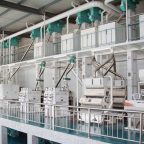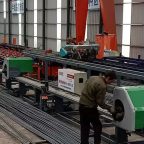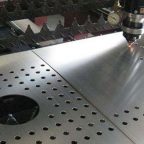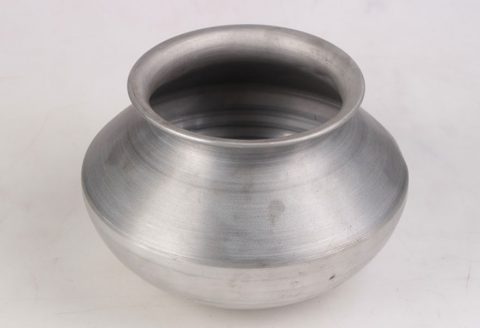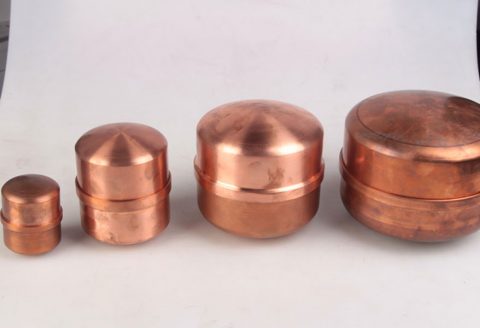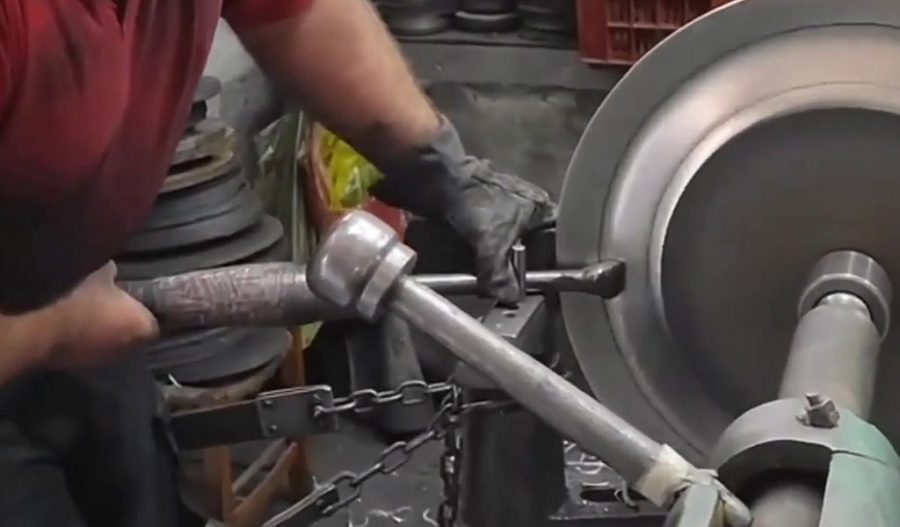
Spinning, a metalworking process that involves rotating a metal disc or tube at high speed while applying localized pressure to shape it, plays a pivotal role in the manufacturing of drone components. Known as metal spinning or spin forming, this technique has been adapted to meet the demands of modern aerospace applications, particularly in the burgeoning field of unmanned aerial vehicles (UAVs), commonly referred to as drones. The process is valued for its ability to produce lightweight, high-strength, and seamless parts, which are critical for the performance, efficiency, and reliability of drones used in commercial, military, and recreational applications. This article explores the historical context, technical principles, material considerations, applications, advantages, challenges, and future trends of spinning in drone part manufacturing, providing a comprehensive analysis supported by comparative tables.
The rise of drones has revolutionized industries such as logistics, agriculture, surveillance, and cinematography, necessitating advanced manufacturing techniques to produce components that meet stringent performance criteria. Spinning, with its versatility and precision, has emerged as a key process for fabricating drone parts such as motor housings, propeller hubs, structural frames, and aerodynamic fairings. By examining the interplay between spinning and drone manufacturing, this article aims to elucidate the process’s significance in shaping the future of UAV technology.
Historical Context of Spinning in Manufacturing
Origins of Metal Spinning
Metal spinning traces its origins to ancient civilizations, where artisans used rudimentary tools to shape metals into functional objects. Evidence of spinning-like techniques can be found in ancient Egyptian and Chinese metalwork, where craftsmen rotated metal discs on simple lathes to form bowls, vases, and other symmetrical objects. These early methods relied on manual force and basic tooling, laying the groundwork for modern spinning processes.
The Industrial Revolution in the 18th and 19th centuries marked a turning point for spinning, as mechanized lathes and steam-powered machinery enabled greater precision and scalability. By the early 20th century, spinning had become a staple in industries such as automotive and aerospace, where it was used to produce components like wheel rims, exhaust cones, and rocket nozzles. The advent of computer numerical control (CNC) technology in the late 20th century further transformed spinning, allowing for automated, high-precision forming of complex geometries.
Evolution in Aerospace and Drone Applications
The aerospace industry has long relied on spinning for manufacturing lightweight, durable components. During the mid-20th century, spinning was used to produce parts for jet engines, satellite casings, and missile nose cones, where seamless construction and material integrity were paramount. The emergence of drones in the late 20th and early 21st centuries extended these applications to UAVs, which require similar attributes but on a smaller scale.
Drones, initially developed for military reconnaissance, have evolved into versatile platforms with applications in agriculture, delivery, and environmental monitoring. The need for compact, lightweight, and cost-effective components has driven the adoption of spinning in drone manufacturing. Today, spinning is used to produce critical drone parts that must withstand high rotational speeds, aerodynamic forces, and environmental stresses, making it an indispensable process in the UAV industry.
Technical Principles of Spinning
Fundamentals of the Spinning Process
Spinning is a cold-forming process that shapes a flat metal disc or tube, known as a blank, into a desired form by rotating it on a lathe and applying pressure with a forming tool. The blank is clamped against a mandrel, a rotating mold that defines the final shape of the part. As the blank spins, a roller or tool applies localized force, gradually deforming the metal to conform to the mandrel’s contours. The process is typically performed at room temperature, preserving the material’s mechanical properties.
There are two primary types of spinning: conventional spinning and shear spinning. Conventional spinning maintains the blank’s original thickness while stretching the material to form the desired shape, making it suitable for producing thin-walled, symmetrical parts like drone motor housings. Shear spinning, on the other hand, reduces the blank’s thickness while maintaining its diameter, enabling the production of thicker, more robust components such as structural frames.
Equipment and Tooling
Spinning requires specialized equipment, including a spinning lathe, mandrel, forming tools, and, in modern applications, CNC controllers. The lathe provides the rotational force, typically operating at speeds ranging from 500 to 2,000 revolutions per minute (RPM), depending on the material and part geometry. The mandrel, custom-designed for each part, ensures precise shaping, while forming tools, often made of hardened steel or carbide, apply the necessary pressure.
CNC spinning machines have revolutionized the process by enabling programmable tool paths, real-time monitoring, and multi-axis control. These machines can produce complex geometries with tight tolerances, making them ideal for drone components that require high precision. Tooling design is critical in spinning, as the shape, size, and material of the forming tool influence the quality and efficiency of the process.
Material Deformation Mechanics
The mechanics of spinning involve plastic deformation, where the metal undergoes permanent shape change without fracturing. The process relies on the material’s ductility, which allows it to stretch and flow under compressive and tensile forces. Key factors influencing deformation include the material’s yield strength, strain rate, and work-hardening characteristics, as well as the spinning speed, tool pressure, and lubrication.
Finite element analysis (FEA) is often used to model the deformation process, predicting stress distribution, material thinning, and potential defects like wrinkling or cracking. For drone parts, which often require thin-walled structures, controlling deformation is critical to maintaining structural integrity and dimensional accuracy.
Materials Used in Spinning for Drone Parts
Common Materials and Their Properties
The choice of material in spinning is driven by the performance requirements of drone components, including strength-to-weight ratio, corrosion resistance, and manufacturability. Common materials include:
- Aluminum Alloys: Lightweight and corrosion-resistant, aluminum alloys like 6061 and 7075 are widely used for drone motor housings, propeller hubs, and structural frames. These alloys offer excellent formability and high strength, making them ideal for spinning.
- Titanium Alloys: Known for their high strength-to-weight ratio and resistance to extreme temperatures, titanium alloys like Ti-6Al-4V are used in high-performance drones, particularly for military applications. Titanium’s formability is lower than aluminum’s, requiring specialized spinning techniques.
- Stainless Steel: Stainless steel grades like 304 and 316 are used for drone parts requiring high corrosion resistance and durability, such as landing gear components. These materials are less formable than aluminum but offer superior mechanical properties.
- Magnesium Alloys: Magnesium alloys, such as AZ31, are among the lightest structural metals, making them suitable for ultra-lightweight drone frames. However, their low ductility requires careful process control during spinning.
- Composite Materials: While traditional spinning focuses on metals, advancements in hybrid spinning techniques have enabled the forming of metal-composite laminates for drone parts, combining the strength of metals with the lightweight properties of composites.
Material Selection Criteria
Material selection for spinning drone parts is guided by several factors:
- Mechanical Properties: The material must withstand the stresses of flight, including aerodynamic loads, vibrations, and impact forces.
- Weight: Lightweight materials are critical for maximizing drone range and payload capacity.
- Formability: The material must be ductile enough to undergo plastic deformation without cracking or wrinkling.
- Cost: Material and processing costs must align with the drone’s intended application, with consumer drones prioritizing affordability and military drones emphasizing performance.
- Environmental Resistance: Materials must resist corrosion, UV radiation, and temperature fluctuations encountered during operation.
Comparative Table of Materials
The following table compares the properties of common materials used in spinning for drone parts:
| Material | Density (g/cm³) | Yield Strength (MPa) | Formability | Corrosion Resistance | Cost ($/kg) | Typical Applications |
|---|---|---|---|---|---|---|
| Aluminum 6061 | 2.70 | 276 | High | Good | 3–5 | Motor housings, frames |
| Aluminum 7075 | 2.81 | 503 | Moderate | Good | 5–8 | Propeller hubs, fairings |
| Titanium Ti-6Al-4V | 4.43 | 880 | Low | Excellent | 20–30 | High-performance frames |
| Stainless Steel 304 | 8.00 | 215 | Moderate | Excellent | 2–4 | Landing gear, connectors |
| Magnesium AZ31 | 1.78 | 200 | Low | Moderate | 5–10 | Ultra-lightweight frames |
| Metal-Composite | Varies | Varies | Moderate | Good | 10–20 | Hybrid structural components |
Applications of Spinning in Drone Manufacturing
Motor Housings
Motor housings are critical drone components that encase the electric motors driving the propellers. These housings must be lightweight, durable, and capable of dissipating heat generated during operation. Spinning is ideal for producing seamless motor housings from aluminum or magnesium alloys, ensuring high structural integrity and precise dimensional control. The process allows for thin-walled designs that minimize weight while maintaining strength, contributing to improved motor efficiency and drone performance.
Propeller Hubs
Propeller hubs connect the blades to the motor shaft, transmitting rotational force while withstanding centrifugal and aerodynamic loads. Spinning is used to form hubs from high-strength materials like aluminum 7075 or titanium, which offer the necessary mechanical properties. The seamless construction achieved through spinning reduces stress concentrations, enhancing the hub’s durability and reliability during high-speed operation.
Structural Frames
The structural frame forms the backbone of a drone, providing support for motors, electronics, and payloads. Spinning is employed to produce lightweight, tubular frame components from aluminum or magnesium alloys. These components are often designed with complex geometries to optimize strength and stiffness while minimizing weight. CNC spinning enables the production of frames with tight tolerances, ensuring compatibility with other drone systems.
Aerodynamic Fairings
Aerodynamic fairings are used to reduce drag and protect sensitive components, such as sensors or cameras, from environmental exposure. Spinning is well-suited for forming fairings with smooth, curved surfaces that enhance aerodynamic performance. Materials like aluminum and stainless steel are commonly used, with spinning allowing for the creation of seamless, lightweight fairings that improve flight efficiency.
Comparative Table of Spun Drone Components
The following table compares the characteristics of drone components produced via spinning:
| Component | Material Options | Thickness (mm) | Weight (g) | Key Requirements | Spinning Type |
|---|---|---|---|---|---|
| Motor Housing | Aluminum 6061, Magnesium AZ31 | 0.5–1.5 | 20–50 | Heat dissipation, lightweight | Conventional |
| Propeller Hub | Aluminum 7075, Titanium | 1.0–2.0 | 10–30 | High strength, fatigue resistance | Conventional |
| Structural Frame | Aluminum 6061, Magnesium | 1.0–3.0 | 50–200 | Stiffness, lightweight | Shear |
| Aerodynamic Fairing | Aluminum, Stainless Steel | 0.3–1.0 | 15–40 | Smooth surface, drag reduction | Conventional |
Advantages of Spinning in Drone Manufacturing
Lightweight Components
Spinning enables the production of thin-walled, lightweight components that are essential for maximizing drone range and payload capacity. By stretching materials like aluminum and magnesium to their optimal thickness, spinning minimizes weight without compromising strength, a critical factor in UAV design.
Seamless Construction
The seamless nature of spun parts eliminates the need for welds or joints, which can introduce stress concentrations and reduce component reliability. Seamless drone components, such as motor housings and propeller hubs, exhibit improved fatigue resistance and durability, enhancing overall drone performance.
Cost-Effectiveness
Spinning is a cost-effective process for producing small to medium batches of drone parts, as it requires relatively low tooling costs compared to processes like die casting or forging. The ability to use standard lathes and reusable mandrels further reduces manufacturing expenses, making spinning attractive for both consumer and industrial drone production.
Design Flexibility
Spinning offers significant design flexibility, allowing manufacturers to produce complex, symmetrical geometries with minimal material waste. CNC spinning enhances this capability by enabling precise control over tool paths, making it possible to create custom drone components tailored to specific performance requirements.
Material Efficiency
Unlike subtractive processes like machining, which remove material to achieve the desired shape, spinning is a near-net-shape process that minimizes material waste. This efficiency is particularly valuable when working with expensive materials like titanium or metal-composite laminates, reducing production costs and environmental impact.
Challenges of Spinning in Drone Manufacturing
Material Limitations
Not all materials are suitable for spinning, as the process requires high ductility to achieve plastic deformation without cracking. Materials like titanium and certain high-strength alloys have lower formability, necessitating specialized techniques such as hot spinning or incremental forming, which increase process complexity and cost.
Dimensional Accuracy
Achieving tight tolerances in spinning can be challenging, particularly for thin-walled components with complex geometries. Factors such as material springback, tool wear, and mandrel deflection can affect dimensional accuracy, requiring advanced process control and post-processing techniques like machining or polishing.
Production Scalability
While spinning is cost-effective for small to medium production runs, it is less efficient for high-volume manufacturing compared to processes like stamping or injection molding. The sequential nature of spinning, where each part is formed individually, limits throughput, making it less suitable for mass-produced consumer drones.
Tooling and Setup Costs
Although spinning generally has lower tooling costs than other forming processes, the design and fabrication of custom mandrels and forming tools can be expensive, particularly for complex drone components. These costs can be a barrier for small-scale manufacturers or those producing low-volume, high-variability parts.
Defect Management
Common defects in spinning include wrinkling, cracking, and surface imperfections, which can compromise the performance of drone components. These defects arise from improper process parameters, such as excessive tool pressure or inadequate lubrication. Mitigating defects requires careful process optimization and quality control, adding to production time and cost.
Advanced Spinning Techniques for Drone Manufacturing
CNC Spinning
CNC spinning has transformed the production of drone parts by enabling automated, high-precision forming. CNC machines use programmable tool paths to control the movement of the forming tool, allowing for the creation of complexSpatially complex geometries with tight tolerances. This technology is particularly valuable for drone manufacturing, where components must meet stringent dimensional and performance requirements.
Hot Spinning
Hot spinning involves heating the blank to improve its formability, making it suitable for materials like titanium and high-strength alloys that are difficult to form at room temperature. In drone manufacturing, hot spinning is used to produce high-performance components, such as titanium frames and hubs, that require superior strength and durability.
Flow Forming
Flow forming is an advanced spinning technique that combines elements of spinning and extrusion to produce high-strength, thin-walled components. This process is used to manufacture drone frames and motor housings with enhanced mechanical properties, as it induces significant work hardening in the material.
Hybrid Spinning
Hybrid spinning integrates spinning with other processes, such as additive manufacturing or composite forming, to produce multifunctional drone components. For example, hybrid spinning can be used to form metal-composite laminates, combining the strength of metals with the lightweight properties of composites for advanced structural frames.
Quality Control and Testing
Non-Destructive Testing (NDT)
Non-destructive testing methods, such as ultrasonic testing and X-ray inspection, are used to detect internal defects in spun drone components. These techniques ensure that parts meet aerospace-grade quality standards, identifying issues like cracks, voids, or material inconsistencies without damaging the component.
Dimensional Inspection
Dimensional inspection involves measuring the geometry of spun parts using coordinate measuring machines (CMMs) or laser scanners. This process verifies that components meet tight tolerances, ensuring compatibility with other drone systems and optimal performance during flight.
Mechanical Testing
Mechanical testing, including tensile, fatigue, and impact tests, is conducted to evaluate the strength, durability, and performance of spun components. These tests simulate the stresses encountered during drone operation, ensuring that parts can withstand aerodynamic loads, vibrations, and environmental conditions.
Environmental and Economic Considerations
Sustainability in Spinning
Spinning is a relatively sustainable manufacturing process, as it generates minimal material waste and can be performed with energy-efficient equipment. The use of recyclable materials like aluminum and magnesium further enhances the environmental benefits of spinning, aligning with the growing demand for eco-friendly manufacturing practices in the drone industry.
Economic Impact
The adoption of spinning in drone manufacturing has significant economic implications, creating jobs in areas such as equipment design, process engineering, and quality control. The cost-effectiveness of spinning also enables smaller manufacturers to enter the drone market, fostering innovation and competition.
Future Trends in Spinning for Drone Manufacturing
Automation and Industry 4.0
The integration of automation and Industry 4.0 technologies, such as artificial intelligence (AI) and the Internet of Things (IoT), is poised to revolutionize spinning. AI-driven process optimization can enhance efficiency and quality, while IoT-enabled machines provide real-time data for predictive maintenance and performance monitoring.
Advanced Materials
The development of new materials, such as high-entropy alloys and nanostructured composites, is expanding the possibilities for spinning in drone manufacturing. These materials offer superior mechanical properties, enabling the production of next-generation components with unprecedented performance.
Additive Manufacturing Integration
The combination of spinning with additive manufacturing, or 3D printing, is an emerging trend that allows for the creation of hybrid components with complex internal structures. This approach is particularly promising for drone parts that require integrated cooling channels, sensors, or lightweight lattice structures.
Miniaturization and Micro-Spinning
As drones become smaller and more compact, there is growing demand for micro-spinning techniques capable of producing miniature components with high precision. Advances in tooling and CNC technology are enabling the fabrication of micro-scale motor housings, hubs, and frames for nano-drones and swarm robotics.
Case Studies
Consumer Drones: DJI Mavic Series
The DJI Mavic series, a leading line of consumer drones, relies on spun aluminum motor housings and propeller hubs to achieve lightweight, high-performance designs. Spinning enables DJI to produce cost-effective components that meet the demands of recreational users while maintaining durability and efficiency.
Military Drones: General Atomics MQ-9 Reaper
The MQ-9 Reaper, a military UAV, incorporates spun titanium frames and fairings to withstand extreme operational conditions. The use of hot spinning and flow forming ensures that these components meet stringent aerospace standards, providing the strength and reliability required for long-endurance missions.
Agricultural Drones: PrecisionHawk Lancaster
The PrecisionHawk Lancaster, used for agricultural monitoring, features spun magnesium frames that minimize weight while supporting heavy sensor payloads. The seamless construction of these frames, achieved through CNC spinning, enhances the drone’s stability and longevity in harsh outdoor environments.
Conclusion
Spinning is a cornerstone of modern drone manufacturing, enabling the production of lightweight, high-strength, and seamless components that meet the demanding requirements of UAV applications. From motor housings to structural frames, spinning offers unmatched versatility, cost-effectiveness, and design flexibility, making it an essential process in the drone industry. Despite challenges such as material limitations and scalability, advancements in CNC technology, hot spinning, and hybrid techniques are expanding the capabilities of spinning, paving the way for innovative drone designs. As automation, advanced materials, and additive manufacturing continue to shape the future of spinning, the process will remain a critical driver of progress in the rapidly evolving world of unmanned aerial vehicles.
Maximize Tooling and CNC Metal Spinning Capabilities.
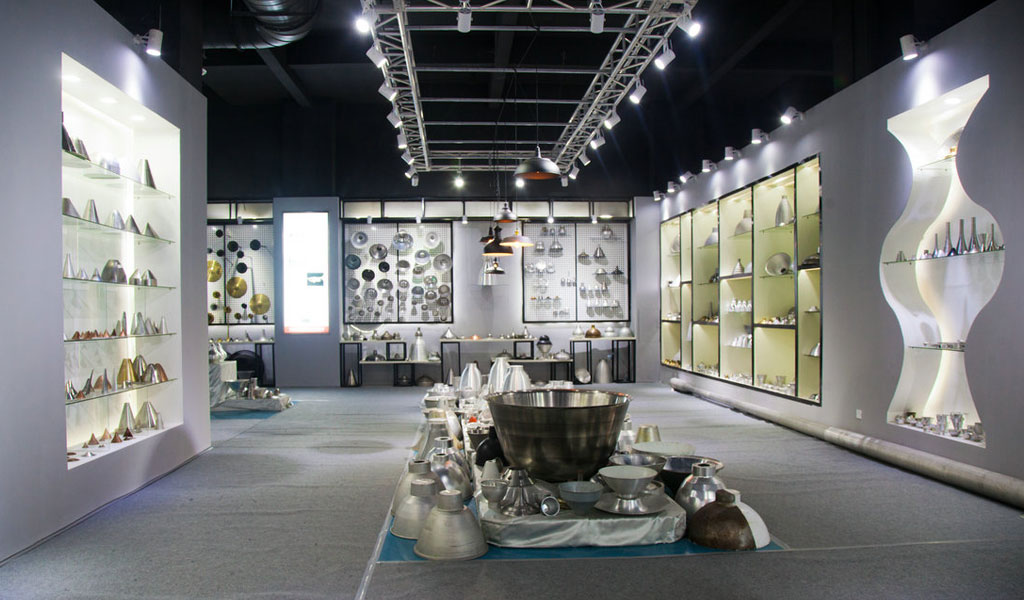
At BE-CU China Metal Spinning company, we make the most of our equipment while monitoring signs of excess wear and stress. In addition, we look into newer, modern equipment and invest in those that can support or increase our manufacturing capabilities. Our team is very mindful of our machines and tools, so we also routinely maintain them to ensure they don’t negatively impact your part’s quality and productivity.
Talk to us today about making a rapid prototype with our CNC metal spinning service. Get a direct quote by chatting with us here or request a free project review.
BE-CU China CNC Metal Spinning service include : CNC Metal Spinning,Metal Spinning Die,Laser Cutting, Tank Heads Spinning,Metal Hemispheres Spinning,Metal Cones Spinning,Metal Dish-Shaped Spinning,Metal Trumpet Spinning,Metal Venturi Spinning,Aluminum Spinning Products,Stainless Steel Spinning Products,Copper Spinning Products,Brass Spinning Products,Steel Spinning Product,Metal Spinnin LED Reflector,Metal Spinning Pressure Vessel,
